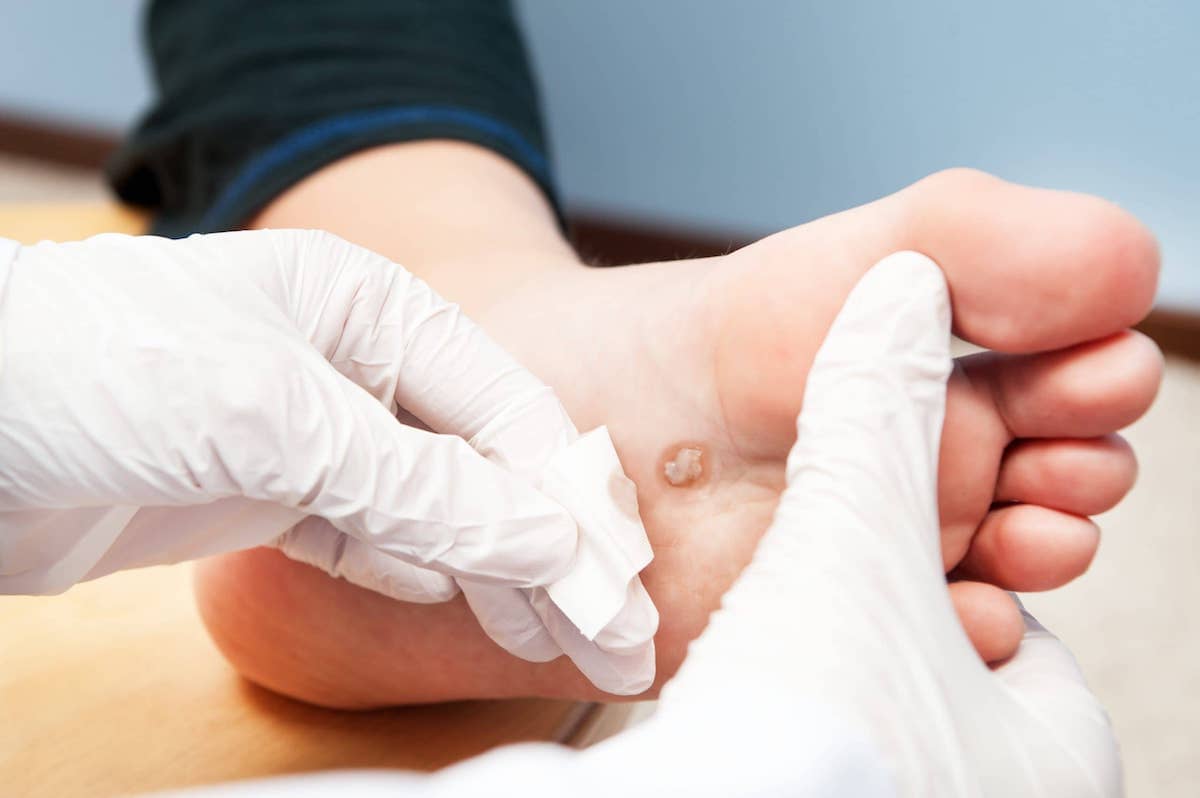
Health problems which would be painful and debilitating for most people can be downright catastrophic for individuals with diabetes.
This is particularly true when it comes to issues affecting the legs and feet.
Diabetes makes the extremities extremely vulnerable to infection and the development of foot ulcers.
Making matters worse, diabetes can limit the ability to experience foot pain or discomfort which would otherwise alert the person to the existence of the problem.
While diabetic foot ulcers are treatable, they can become much more severe and painful if not addressed in a timely fashion.
That is why prevention of diabetic foot ulcers is so critical. Individuals with diabetes need to stay vigilant and take affirmative steps to ensure that their feet are trouble-free.

Fortunately, working closely with a podiatrist experienced in diabetic foot care, those steps are easy.
What Exactly Are Foot Ulcers?
Diabetic foot ulcers are open sores or wounds that usually develop on the bottom of the foot.
Several factors can contribute to the development of foot ulcers, including poor circulation, deformities, irritation, pressure or friction, trauma, and long-term diabetic conditions.
Redness, swelling, and drainage are frequent and visible symptoms of a foot ulcer.
Approximately 15 percent of patients with diabetes experience foot ulcers, and about six percent of people who develop an ulcer wind up admitted to a hospital due to infection or other ulcer-related complications.
Preventative Podiatry for Diabetic Foot Ulcers
The first step in diabetic foot ulcer prevention is to be aware of the risk.
Knowing your vulnerability to the problem should motivate you to stay vigilant and take other preventative actions to reduce the likelihood of their development.
4 Ways To Keep Foot Ulcers From Becoming Serious Issues
- Inspect your feet every day, keeping an eye out for cuts, cracks, and blisters.
- Clean your feet with mild soap and lukewarm water each day, paying close attention to the areas between your toes. Make sure to dry them completely and use talcum powder to keep them dry.
- Stop smoking.
- Pick shoes that do not cause friction or irritation and wear socks at all times.
Critically, individuals with diabetes should have their feet examined by a podiatrist at least once a year.
Your podiatrist should check for, among other things:
- A history of prior foot ulceration or amputation
- A history of poor visual acuity
- Neuropathy and palpation of pedal pulses
- Elevated blood pressure
- Foot and toe deformities
For Diabetic Foot Care and Health, Call Our Teams Today!
Our skilled podiatrists at JAWS Podiatry have extensive experience working with individuals with diabetes to keep their feet healthy and address any problems should they arise.
Our exceptional foot and ankle specialists and friendly staff welcome the opportunity to provide you with the highest degree of care in our welcoming, comfortable offices.
If you need any type of diabetic foot care, please contact us today at (954) 922-7333 or send us a message to schedule a consultation.
- The Life-Changing Power of Cosmetic Foot Surgery - February 27, 2023
- What Are The Most Common Pediatric Foot Conditions? - October 5, 2020
- 4 Important Things To Know Before Having Foot Surgery - September 21, 2020



